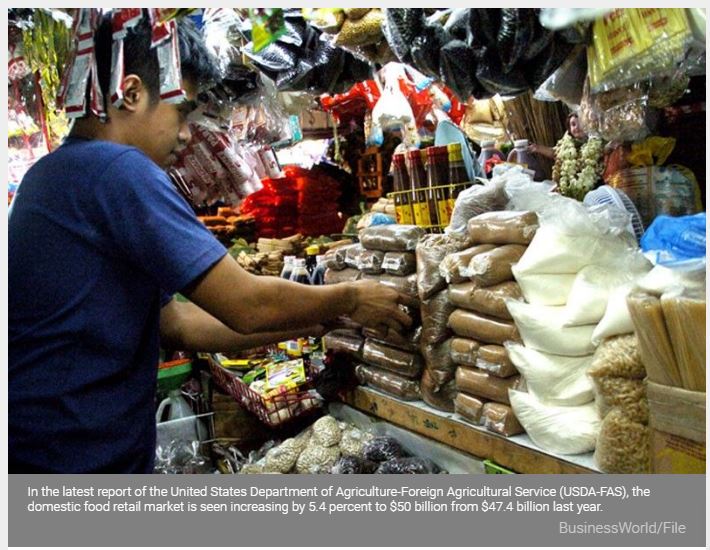Philippines food retail sector to hit $50 billion sales
MANILA, Philippines — The food retail industry in the country will continue to expand with total sales expected to reach a record-high $50 billion, driven by rising income and a growing population.
In the latest report of the United States Department of Agriculture-Foreign Agricultural Service (USDA-FAS), the domestic food retail market is seen increasing by 5.4 percent to $50 billion from $47.4 billion last year.
“Driven by rising incomes, a growing population, and a strong preference for American brands, the Philippines imported $1.09 billion of US consumer-oriented products in 2018. US exports in this sector may grow further in 2019, reaching an all-time high of $1.2 billion,” USDA said.
“With a growing middle class and a large, young population, the Philippine economy is rooted in strong consumer demand, boosted by rising incomes and overseas remittances,” it added.
Last year, Filipino households spent more than half of their budget on essentials including food.
Purchases of food and non-alcoholic beverages comprised almost 40 percent of total household expenditures in 2018.
The country’s traditional “sari-sari” stores still dominate the food retail market, which accounts for 58 percent of the market.
USDA said the continuous expansion of the food retail industry in the country creates robust opportunities for US exporters of high-value, consumer-oriented food and beverage products.
The Philippines is the largest market in Southeast Asia and the 10th largest export market in the world for US consumer-oriented food and beverage products, importing a total of $1.09 billion in 2018.
The United States also remains the Philippines’ largest supplier for food, beverage and ingredient products with 16 percent market share.
This is followed by Indonesia, China, New Zealand, Thailand, Singapore and Australia with total imports of consumer-oriented food growing annually at an average of 10 to 15 percent over the last five years.
“While domestically produced items account for about 80 percent of the total food supply with the balance being imported, food retailers remain very optimistic concerning the competitiveness of imported products,” USDA said.
“Although most imported items cost more than locally produced ones, US products still remain very popular and have great appeal to Philippine consumers. US products are perceived to have superior quality compared to imports from other countries,” it added.
Source: https://www.philstar.com/business/2019/07/22/1936651/philippines-food-retail-sector-hit-50-billion-sales#GJxkTRHzOlQmaqke.99


 Thailand
Thailand




